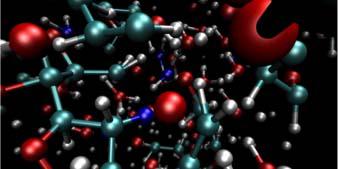Quantum Technologies Begin Their Great Leap Forward
No longer the wave of the future, quantum communications are here today. China recently launched Micius, the world’s first-ever quantum communications satellite capable of securing transmitted data within a high-dimensional quantum encryption.
This development is a “Wow!” There is no known capability to decrypt quantum encryption. This means no one can hack it until quantum technology reaches a point where technology gurus can think of it as another element within the Internet of Things (IoT).
This singularity propels China ahead of the rest of the world in quantum technology. It’s not that there is any lack of ongoing quantum research and development; it’s just that quantum physics is so challenging an endeavor that even Einstein was unable to completely understand it. Einstein was the first to recognize that Planck’s quantum physics would require every physicist to rewrite the laws of physics. And it was Einstein who theorized that light could be both a wave and a particle, simultaneously—something called wave-particle duality.
This quantum communications capability is a huge achievement by the Chinese scientific community. The Chinese quantum satellite already is providing a hack-free communications network within the province of Shandong that is being used by hundreds of Chinese government end users.
Today, encryption is based on mathematical algorithms to protect data in transmitted messages. Recent high-level cases of just how secure data is within the mathematics-derived encryption now include Equifax, which basically has exposed the credit data of all Americans in its breach.
As global technology continues to march into the future, more and more breaches will occur. Then, when quantum technology fully joins the fray, the IoT architecture will change overnight with much end-user technology and cybersecurity going the way of cathode ray tubes.
A lot of quantum research and development is going on within the AFCEA/SIGNAL audience. The military services' research and development labs, along with the Intelligence Advanced Research Projects Activity (IARPA), the Defense Advanced Research Projects Agency (DARPA) and the National Science Foundation (NSF) are in various stages of quantum research and development with varying successes.
The U.S. Army Research Laboratory Center for Distributed Quantum Information (CDQI) is working alongside not only other military service labs but also academia and industry. One objective is to develop a quantum command, control, communications and computers (C4) capability to support the Army.
The U.S. Naval Research Laboratory is pursuing the challenge of using single-electron quantum dots in silicon for quantum information processing. The U.S. Air Force Research Laboratory has been studying quantum computing since 2014.
DARPA is putting a lot of effort and dollars into quantum research under its Quantum Information Science and Technology (QuIST) program, which goes back to 2001. QuIST has funded researchers who developed a quantum key distribution network.
IARPA is interested in working specific areas of quantum such as quantum computing and coherent superconducting qubits (CSQ). And the NSF has invested $12 million in encouraging research using quantum technology to ensure secure communications.
Many complementing efforts are underway in quantum research and development. The Chinese success demonstrates the value that quantum technology brings to a global technology market. The future is at hand.
David E. Meadows is a retired U.S. Navy captain and the author of the Sixth Fleet series, along with Seawolf, Joint Task Force Liberia, Tomcat, Final Run and other action-adventure novels.





Comments